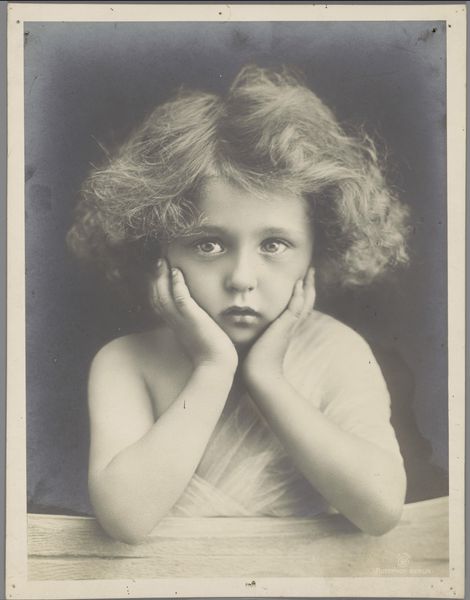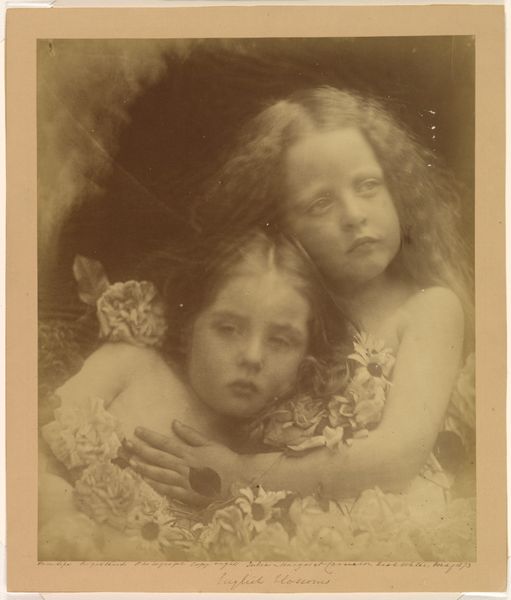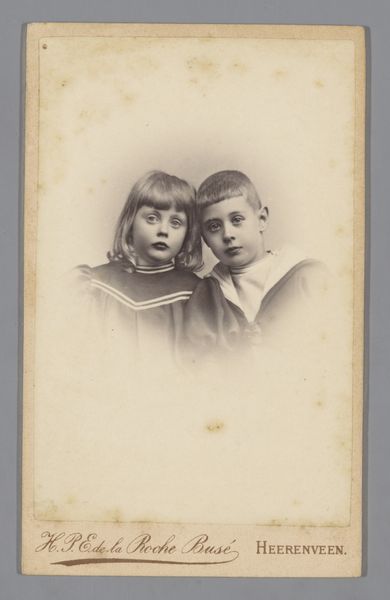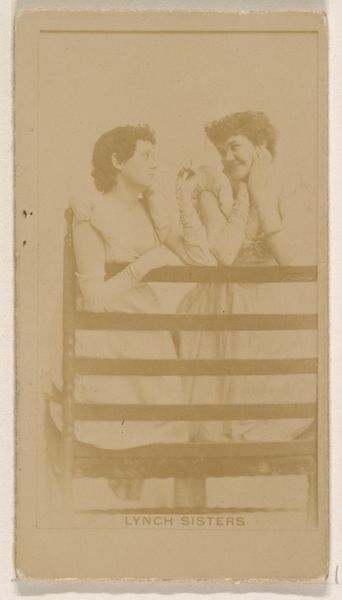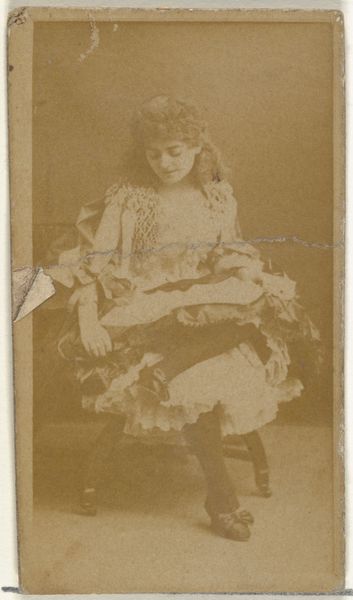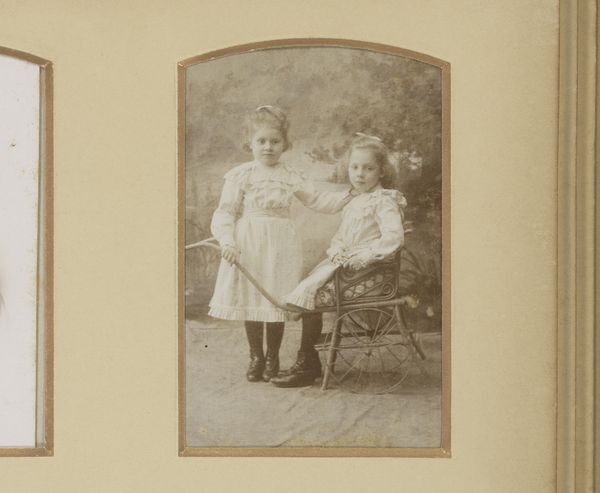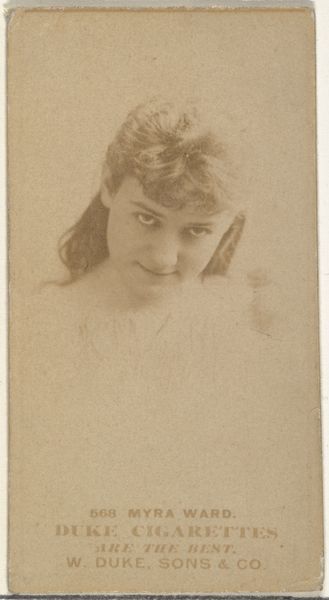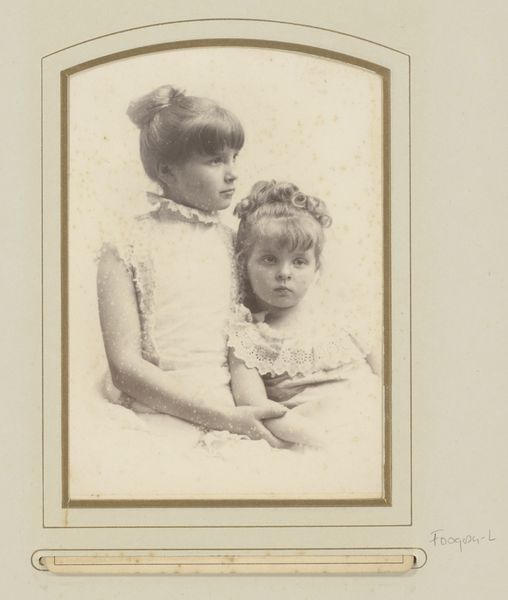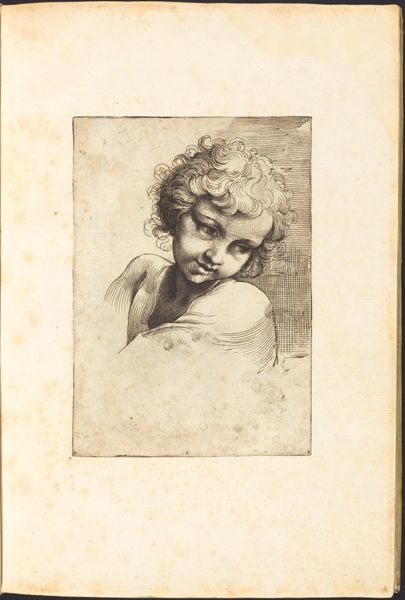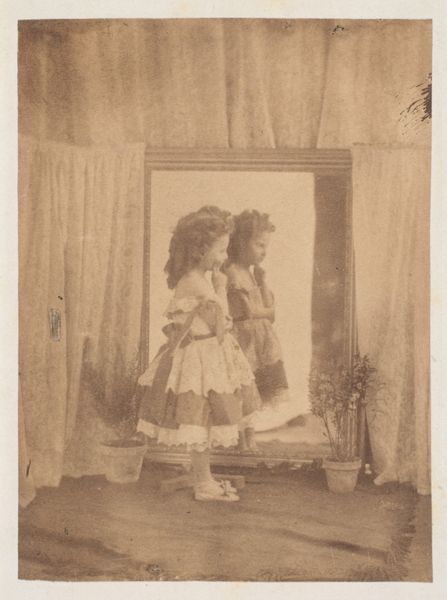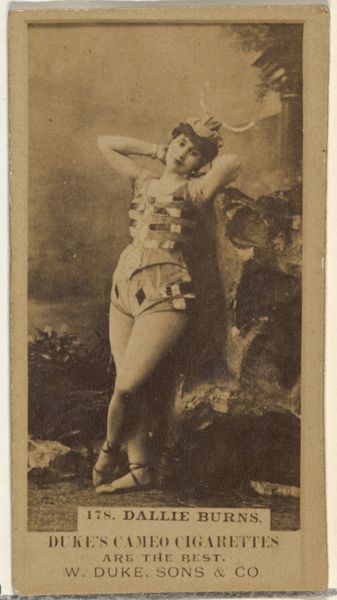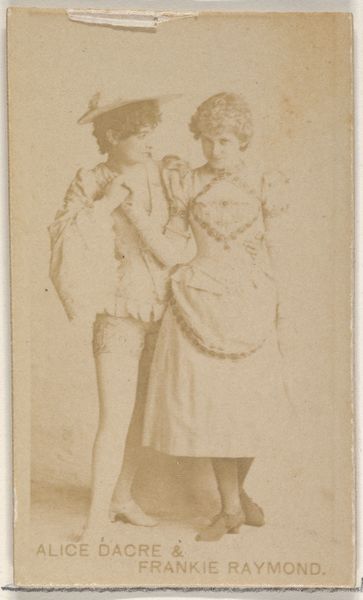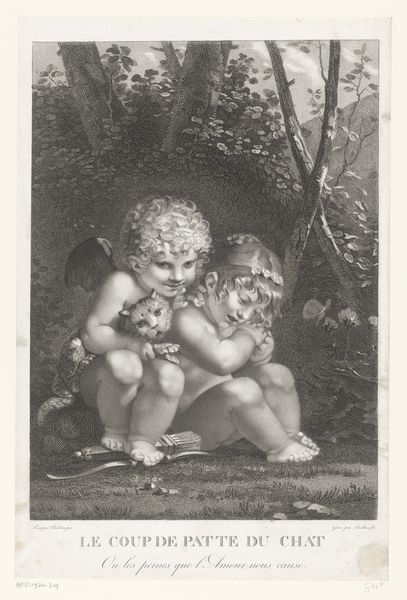
Portret van Agnes Renée en Irène Heloïse Pauw van Wieldrecht, dochters van de fotograaf, in een pose die ontleend is aan de putti op de Sixtijnse Madonna van Rafaël (Dresden, Galerie Alte Meister) 1909 - 1910
0:00
0:00
photography, gelatin-silver-print
#
portrait
#
pictorialism
#
photography
#
gelatin-silver-print
#
symbolism
#
genre-painting
Dimensions: height 360 mm, width 486 mm
Copyright: Rijks Museum: Open Domain
Curator: This gelatin-silver print, crafted between 1909 and 1910 by Henry Pauw van Wieldrecht, presents a captivating image of his daughters. Editor: It’s immediately striking how the sepia tones and soft focus give it such a dreamlike quality. The composition seems so carefully constructed. Curator: Indeed. Van Wieldrecht explicitly referenced Raphael’s Sistine Madonna with the poses of his daughters. We observe the allusion most clearly in their posture and wistful gazes, mirroring the famous putti at the painting’s base. Editor: The wings, while subtle, solidify the angelic reference, adding layers of symbolism. Innocence, perhaps, but also an idealized vision of childhood… elevated and otherworldly. It is quite successful at echoing Renaissance art, specifically in how the subjects are arranged within the rectangular format, almost like a frieze. Curator: The pictorialist style here is paramount, creating a softened reality through the manipulated focus and printing process. It lends an ethereal, almost allegorical feeling that moves it beyond simple portraiture. Observe the delicate gradation of light, particularly how it illuminates their faces, yet shrouds their bodies. Editor: It certainly elevates what might have been a simple family portrait to a symbolic exploration of idealized beauty and childhood purity. And the artist is successful at achieving this aim with very restrained tonality, the focus instead remaining with their carefully composed bodies. Is this staged spirituality perhaps? It feels both tender and self-aware, knowing. Curator: I find the careful staging intriguing and its resonance of genre painting that we do not expect within photography. It merges the sensibilities and historical connotations of art with technical execution. It moves towards abstraction, without completely sacrificing all direct and conventional elements of representation. Editor: It’s this duality of intentional artifice, balanced with the raw expressiveness of photography, that continues to engage me. It transforms something documentary into something profoundly evocative.
Comments
No comments
Be the first to comment and join the conversation on the ultimate creative platform.
